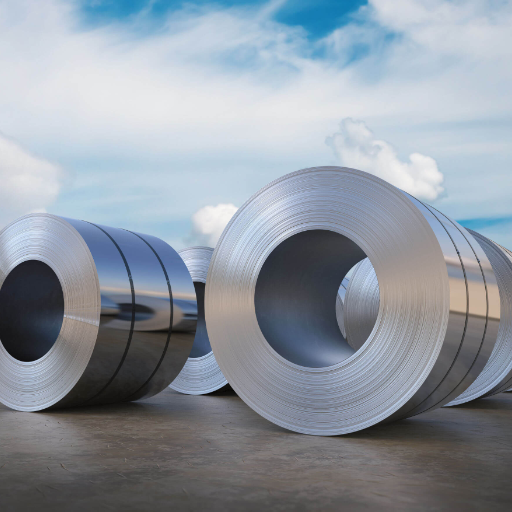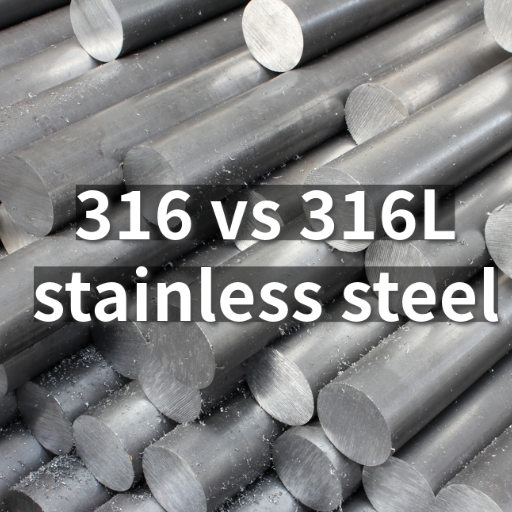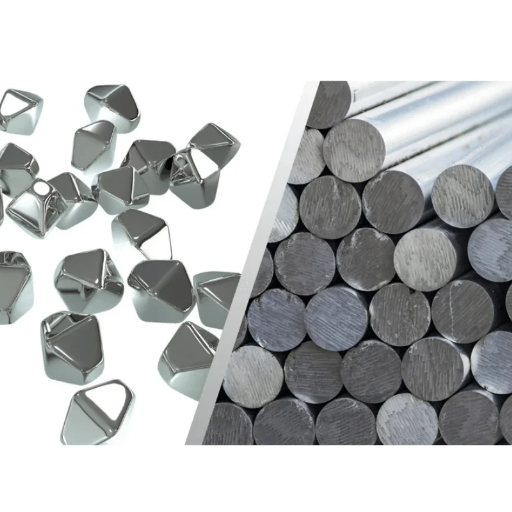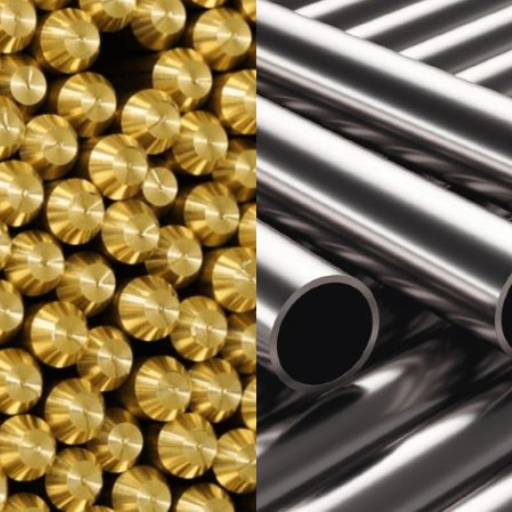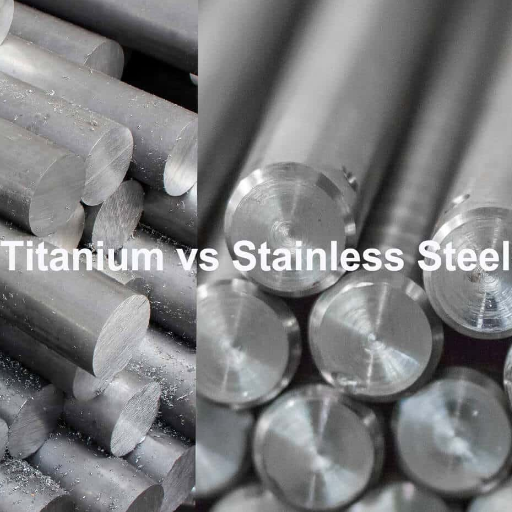When it comes to choosing the correct stainless steel in an industrial setting, understanding the properties that distinguish each grade is of paramount importance. In the great world of stainless steel, 410 and 316 are amongst the extremely popular different grades, with each providing a different set of properties and a specific set of advantages. How do they compare though when speaking about strength, corrosion resistance, and price? This guide will undertake a thorough comparison while discussing some of the principal considerations. Whether buying materials for manufacturing or trying to get insights into which alloy is more suitable for your project, that explanation will empower you to make a well-informed decision. You will clearly understand the comparison between these two types of stainless steel by the end of this essay, along with which one can be the best fit for your application.
Chemical Composition of 410 and 316 Stainless Steel
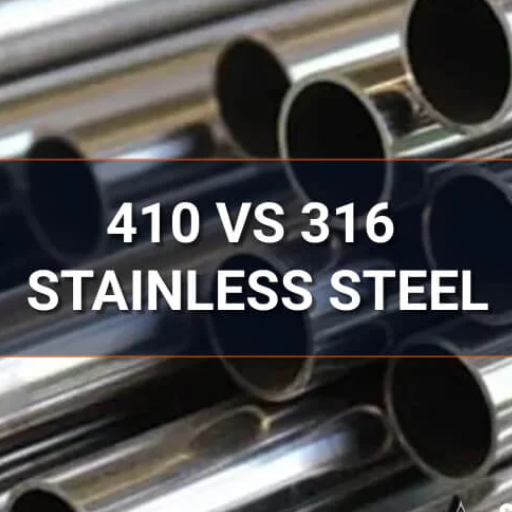
410 stainless steel consists primarily of iron, with a very high chromium content (11.5-13.5%) and very low-carbon additions (up to 0.15%). This matrix basically renders it one good corrosion-resistant material, with hardness being developed through a heat treatment process, and yet not much nickel exists. This limits ductility and, consequently, some toughness.
316 stainless steel, on the other hand, contains iron, chromium (16-18%), high levels of nickel (10-14%), and the added element of molybdenum (2-3%), thus providing resistance against pitting, crevice corrosion, and harsh chemical environments-the first preference for marine and industrial applications.
Chromium Content and Its Impact
Chromium is one alloying element that plays a significant role in determining the properties of stainless steel. Its main function is to confer corrosion resistance to the material by forming a passive film of chromium oxide on its surface. This film is highly adherent and self-healing, so it protects against oxidation and corrosion even after having sustained some very minor damage. Stainless steel generally contains not less than 10.5% chromium by weight since this value is necessary for a steel to attain good corrosion resistance to degradation in an environmental medium.
Higher chromium content, like the 16% to 18% in 316 stainless steel, ensures that the material cannot be acted upon by oxidizing acids and especially at higher temperatures. This gives the material an edge to attain increased hardness, tensile strength, and wear resistance. Yet high chromium can cause brittleness-this would need to be carefully countered with nickel and molybdenum so that the final result sets the proper level of performance. This complex interplay of elements helps stainless steels to meet tough requirements that range from civil construction to medicinal instrumentation to chemical processing.
Carbon Content and Mechanical Properties
The carbon content in stainless steel greatly impacts its mechanical properties, such as hardness, strength, and ductility. With low carbon, like in grade 304L, welding can be carried out with ease. It will check the precipitation of carbides and restrict them from grain boundary sensitization that could otherwise impoverish the corrosion resistance of the material. Grades that come with more carbon, however, with 440C as an example, result in an excellent ability to harden from wear, hence being suited for use as cutting tools, as well as those steel-wearing tools needed for ball bearing operations, etc.
These days, advancements in metallurgical methods allow manufacturers to set a desired level of carbon for their materials to tailor them to meet set performance requirements. Data indicate that when carbon content exceeds 0.03% in some stainless steel alloys, its tensile strength increases substantially, which is, however, unfavorable for ductility and impact resistance. Thus, the choice of carbon content has to be a decision made in compromise between the maintenance of the expected mechanical properties and the operational considerations given to the exposure in high temperature conditions or a corrosive environment. Detailed material specifications and an insightful review of carbon-enriched stainless steels versus low-carbon ones shall assist engineers in better deploying them in various fields of interest, such as automotive, aerospace, and chemical processing.
Mechanical Properties of Stainless Steel 410 vs 316
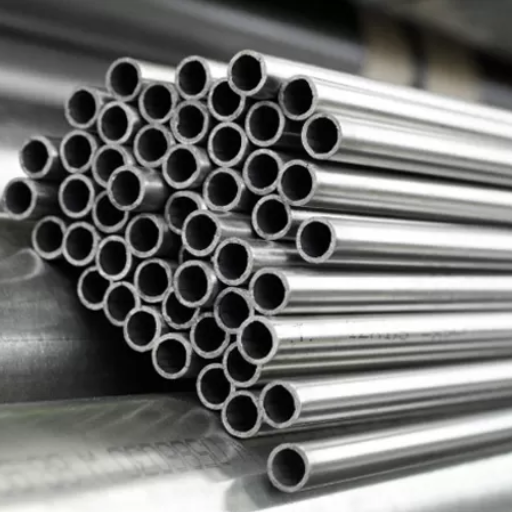
Another significant contrast between stainless steel 410 and 316 in mechanical properties arises from their respective chemical compositions and subsequent applications.
- Hardness and Strength: Stainless Steel 410 is a martensitic grade known for its hardness and strength after heat treatment, with applications requiring wear resistance such as cutlery and valves. Stainless Steel 316, being an austenitic grade, gives lower hardness but has extreme ductility and toughness for complex fabrication.
- Corrosion Resistance: Stainless Steel 316 stands far superior against corrosion when contrasted with 410, more so in an environment rich in chlorides, and with the assurance of higher molybdenum content. This resistant quality thus finds its application in the marine, chemical, and pharmaceutical industries.
- Temperature Resistance: Stainless Steel 316 is highly resistant to high temperature oxidation, 410 can also withstand moderate heats, but its toughness is compromised at higher temperatures.
- Weldability and Machinability: Compared to 410, Stainless Steel 316 welds and machines with much less difficulty, whereas 410 might need special machining techniques due to its increased hardness and brittleness in some conditions.
In fact, the negatives one presents to the other, making their choice vary based on the application’s requirement.
Compare the Differences: 410 Stainless Steel vs 316 Stainless Steel
|
Parameter |
Stainless Steel 410 |
Stainless Steel 316 |
|---|---|---|
|
Composition |
High Chromium, Low Nickel |
High Chromium, High Nickel, Molybdenum |
|
Corrosion Resistance |
Moderate, mainly in mild environments |
Excellent, especially in marine conditions |
|
Hardness |
Higher hardness, requires heat treatment |
Lower hardness, better ductility |
|
Weldability |
More difficult, specialized methods needed |
Easier, suitable for complex welding |
|
Machinability |
Requires careful control due to brittleness |
Easier, tolerates standard machining tools |
|
Heat Resistance |
Retains strength at moderate temperatures |
Performs well in high temperatures |
|
Strength |
Higher, good for heavy-load applications |
Sufficient, priorities toughness |
|
Applications |
Cutlery, valves, turbines |
Medical devices, marine equipment |
|
Magnetic Properties |
Magnetic |
Non-magnetic |
|
Cost |
Generally less expensive |
Higher due to alloying components |
Hardness Levels of 410 and 316
Stainless steel hardness varies greatly from grade to grade because of the difference in composition and heat treatment methods. 410 stainless steel, by nature, is a martensitic grade and is characterized by a degree of hardness. By heat treating 410 stainless steel, it is possible to achieve a Rockwell hardness of about 50 HRC, making it ideal for resin antiwear applications suited to cutlery, surgical instruments, and industrial tools.
Applications in Various Industries
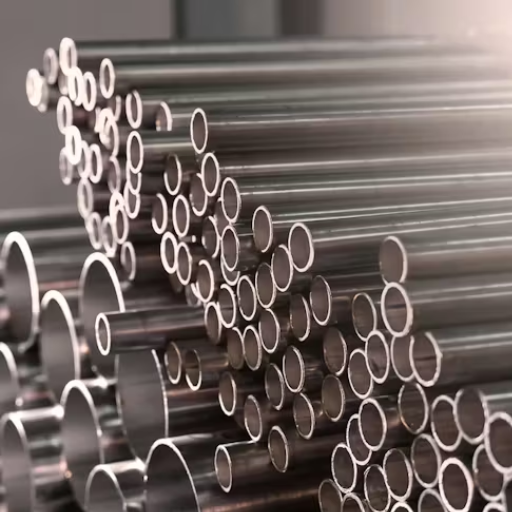
Stainless steel 304 is in heavy use in the food and beverage industry for the preparation and installation of kitchen appliances, processing equipment, and storage tanks. The name is derived from its good corrosion resistance and easy cleaning. It is also useful in applications requiring strength and wear: architectural mechanisms like railings, trim, etc.
Mostly in marine, chemical plants, and pharmaceutical equipment, Stainless Steel 316 is employed where resistance to chlorides and harsh chemicals are of primary importance. Unresting to pitting and crevice corrosion, it is an essential element in saltwater applications and medical devices.
Medical Applications of 410 and 316
Applications of Stainless Steel 410:
- Surgical Instruments
Stainless Steel 410 is characterized by high strength and moderate corrosion resistance, making it suitable for use in surgical instruments such as scalpels, scissors, and clamps. The hardness, therefore, offers sharp cutting edges and lasts the lifetime of the applications.
- Orthopedic Devices
Offering immense mechanical strength, it enables the making of temporary orthopedic implants, such as screws, pins, plates, where a great level of strength is needed to allow the process of bone healing.
- Dental Equipment
Stainless Steel 410 keeps the forceps and probes of dental tools sharp and wear-resistant during continuous use.
Applications of Stainless Steel 316:
- Biomedical Implants
Being of low-carbon grade, Stainless Steel 316L is extensively used in permanent implants for joint replacements and fracture fixation devices; risk of leaching is minimized through its corrosion resistance, and hence biocompatibility-related problems.
- Surgical Equipment
Because of its resistance against chemicals and sterilization and withstanding high-temperature sterilization chemicals, 316 is an excellent choice among surgical instruments, ranging from retractors to trays to forceps.
- Pharmaceutical Processing Devices
Manufacturing Applications for Each Alloy
- Stainless Steel 316
The corrosion resistance ability of Stainless Steel 316 finds extensive application in manufacturing fields demanding such considerations. Owing to its molybdenum content, it is highly resistant to pitting and crevice corrosion, suitable for application in environments exposed to chlorides or saline. The general purpose covers marine fittings, chemical processing equipment, and food processing machinery, where cleanliness and durability are accorded all importance. It, being inert, gores own importance to manufacture medical implants and high-purity pharmaceutical systems.
- Aluminum 6061
The main attractiveness of aluminum 6061 is its high strength-to-weight ratio, its corrosion resistance, and its great machinability. These features placed it in the aerospace, automotive, and electronics manufacturing industries. The specifications include structural components such as aircraft wings, automotive chassis, and machine frames, and also heat exchangers, capitalizing on its thermal conductivity. The application areas of this aluminum are further expanded due to its ability to be surface-treated by various methods, making it suitable for use in more complex and precise industrial applications.
- Titanium Grade 5 (Ti-6Al-4V)
Advantages and Limitations of Stainless Steel Grades
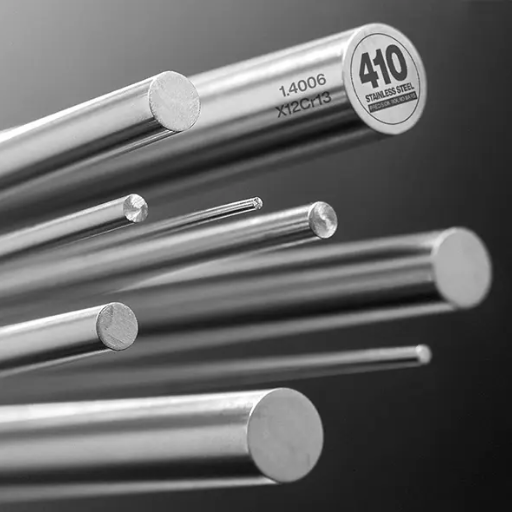
Advantages of Stainless Steel Grades:
- Corrosion Resistance
When exposed to harsher environments, such as inside marine or industrial settings, stainless steels come as great weathering agents with resistance against rust and corrosive attack.
- Strength and Durability
- Versatility
Manufactured to other specs will offer indefinite grades and finishes that may well match stainless steel for any application, from construction to food processing machinery.
- Hygienic Properties
Its smooth, non-porous surface resists microbial buildup, encouraging its use in medicine and food-related endeavors.
- Low Maintenance
Relatively low maintainability involves easy cleaning without any special surface coating requirements.
Limitations of Stainless Steel Grades:
- Cost
The higher initial cost of stainless steel restricts it somewhat for projects running on a tight budget.
- Weight
The weight for its strength limits it from being a lightweight material in specific applications.
- Workability
The difficulties in machining or welding some grades of stainless steel are known and solved by employing appropriate tools and techniques.
- Thermal Conductivity
Strength and Durability Trade-offs
Favorable properties such as the strength and durability of stainless steel make it suitable for less tough industries like construction, automobile, and aerospace. They mainly arise from chromium, which makes the stainless steel withstand erosion and strengthen it. But, to make stainless steel strong, there is a trade-off; it becomes less malleable. A higher grade of stainless steel, such as martensitic or duplex, for instance, possesses higher tensile strength but has a downside-if an application requires large deformation or flexing, steels of this grade may not be the most suitable choice to consider.
With the growth of metallurgical engineering, alloy composition also started to become an important factor when considering the strength-to-weight ratios. For example, to increase strengthening and resistance to environmental stressors, the addition of molybdenum or nickel can be made at a higher cost of materials. Hence, acquiring stainless steel grades with respect to the engineering costs of strength, durability, and cost will find an application that suits the choices after all.
Adaptability of 410 vs 316 Stainless Steel
The steels are versatile due to their mechanical properties and resistance profiles. This defines the areas of usage each steel is adapted for. Grade 410, which classifies as martensitic stainless steel, stands at high hardness and strength due to heat treatment. Comparatively, though, it offers moderate corrosion resistance to 316, hence it is utilized in environments with low to moderate presence of corrosive instances. Examples of applications where 410 stainless steel fulfills strong wear requirements are cutlery, fasteners, and pump shafts.
316 stainless steel, conversely, stands as an austenitic grade with great corrosion resistance due to molybdenum content. Such an environment is particularly disrupted by chlorides or other corrosive elements along the lines of marine or chemical processing. Moreover, stainless steel 316 retains exceptionally good formability and weldability, and hence is chosen for pharmaceutical equipment, surgical instruments, and food processing atmospheres where hygiene and durability are key concerns.
Factors to Consider When Selecting Stainless Steel
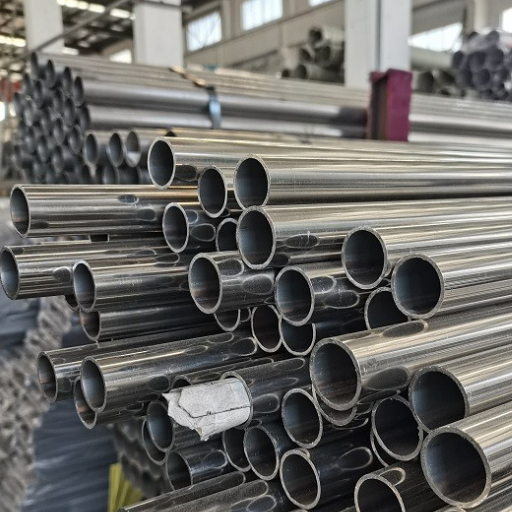
- Corrosion Resistance
- Mechanical Strength
Consider the durability and load-bearing requirements of the application. They all differ in tensile strength, so match the grade to the demands of the project.
- Temperature Tolerance
Assess temperatures and operating conditions in the working environment. Some grades have been developed for high heat, such as grade 310 or 321, while some do well in cryogenic temperatures.
- Hygiene Requirements
For food code, healthcare, or pharmaceutical industries, put cleaning grades before the most important criteria, such as 316 or 304, because they are easy to sterilize and resist bacterial contamination.
- Cost-Effectiveness
Environmental Conditions
Performance and longevity of the stainless steel mainly depend on the conditions in which it is used. Temperature extremes, the presence of chlorides, humidity, and exposure to corrosive agents are all conditions that should be taken into account. In cases where one is dealing with marine environments or the presence of high chloride concentration, stainless steel grades such as 316 that contain molybdenum are considered to offer a better resistance rating from pitting and crevice corrosion. Finally, the rise in temperature requires austenitic stainless steel grades endowed with an increased level of oxidation resistance, such as 310 or 321. All these things, when evaluated thoroughly, would provide the correct concept as to how to choose an alloy that would offer sufficient longevity with a low risk of degradation in structure over a period.
Long-term Performance Requirements
Long-term performance of stainless steel depends on several operational topics and environmental factors, such as stress loads, cyclic temperatures, and corrosive agents. These factors, when selecting a material for prolonged utilization, should also consider its fatigue and creep resistance under stress. Stainless steels, of an austenitic nature, particularly 304 and 316, resist tensile stress and repeated thermal expansion cycles very well, so they can be applied in engineering and industrial areas.
Reference Sources
1. A Review on Microstructural Features and Mechanical Properties of Wheels/Rails Cladded by Laser Cladding: This study focuses on the use of laser cladding to enhance the mechanical properties of rails, including wear resistance and rolling contact fatigue. Materials like 316L and 410 stainless steel were evaluated for their suitability in cladding applications. The research highlights the importance of process parameters (e.g., laser power, scanning speed) in determining the microstructure and mechanical properties of the cladded layers.
3. Investigation of Oxide Layer Development of X6CrNiNb18-10 Stainless Steel Exposed to High-Temperature Water: This study examined the development of oxide layers on X6CrNiNb18-10 (a stainless steel similar to 316) in high-temperature water. It identified a dual-layer oxide structure, with a Cr-rich protective inner layer and an Fe-rich outer layer. The research highlighted the parabolic growth of the Cr layer and the cubic growth of the Fe layer over time.
Frequently Asked Questions (FAQs)
Q: What’s the difference in corrosion resistance between 410 and 316 stainless steel?
A: When comparing the corrosion resistance of 316 stainless steel vs 410, it is clear that 316 stainless steel offers superior corrosion resistance. This is primarily due to its higher nickel content and the presence of molybdenum, which enhances its resistance to pitting and crevice corrosion in chloride environments. In contrast, 410 stainless steel is a martensitic grade that lacks these properties, making it less ideal for applications exposed to harsh conditions. Therefore, for environments where corrosion resistance is critical, 316 is generally the preferred choice.
Q: Why is 316 stainless steel considered more expensive than 410 stainless steel?
A: 316 stainless steel tends to be more expensive than 410 stainless steel due to its composition and enhanced properties. The presence of molybdenum in 316 stainless steel increases its cost, but this also translates to superior performance in corrosive environments. Additionally, 316 stainless steel is often used in various applications, including marine and chemical processing, where its resistance to corrosion justifies the higher price. Meanwhile, 410 stainless steel is often chosen for applications that require higher strength and hardness, but where corrosion resistance is less critical.
Q: In what applications is 410 stainless steel generally used?
A: 410 stainless steel is known for its high tensile strength and is commonly used in applications that require good wear resistance and hardness. For instance, it is often utilized in the manufacturing of cutlery, surgical instruments, and automotive components. However, due to its lower corrosion resistance, it is not suitable for applications in marine environments or those exposed to aggressive chemicals. In contrast, 316 stainless steel is ideal for applications where exposure to corrosion is a concern, making the choice of stainless steel grade crucial based on the specific requirements of the application.
Q: How does the presence of molybdenum affect the properties of 316 stainless steel?
A: The presence of molybdenum in 316 stainless steel significantly enhances its corrosion resistance, particularly against pitting and crevice corrosion in chloride environments. This property makes 316 stainless steel a preferred material for various applications, including those in marine and chemical industries. Without molybdenum, as found in 410 stainless steel, the material would be more susceptible to corrosion, limiting its use in harsher conditions. Consequently, when selecting the right stainless steel grade, understanding the role of molybdenum is essential for ensuring long-term performance in corrosive settings.
Q: What are the stress corrosion cracking properties of 316 stainless steel?
A: 316 stainless steel tends to exhibit excellent resistance to stress corrosion cracking, making it suitable for applications in extreme environments, such as chemical processing and marine operations. This resistance is largely attributed to its austenitic structure, which allows for better ductility and toughness compared to martensitic grades like 410. In applications where the risk of stress corrosion cracking is high, 316 stainless steel is often recommended for its ability to withstand such conditions. Therefore, when considering materials for high-stress environments, 316 stainless steel is typically the more reliable choice.

